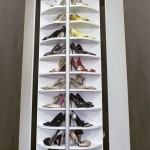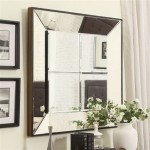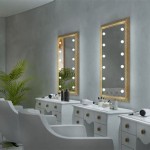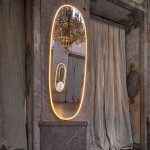How To Hang a Large Heavy Mirror on Drywall
Hanging a large, heavy mirror on drywall requires careful planning and execution to ensure both safety and stability. Improper installation can lead to damage to the wall and potential injury. This guide outlines the essential steps and considerations for successfully hanging a heavy mirror.
1. Assess the Mirror and Wall
Before beginning, accurately measure the mirror's dimensions and weight. This information is crucial for selecting appropriate hanging hardware. Examine the drywall for any existing damage or weaknesses. Identify the wall's stud locations using a stud finder. Marking stud locations with a pencil is helpful for visual reference during installation.
2. Choose the Right Hanging Hardware
Heavy mirrors require robust hanging hardware designed to distribute weight effectively. Standard picture hooks are insufficient for this purpose. Consider the following options, choosing the one most suitable for the mirror's weight and size:
- Heavy-Duty D-Rings and Wire: This is a common and versatile option for medium to large mirrors. Ensure the D-rings are securely attached to the mirror frame and the wire is rated for the mirror's weight.
- French Cleats: These interlocking brackets provide a strong and stable hanging solution for heavy items. One part of the cleat attaches to the wall, while the other attaches to the mirror. The angled design creates a secure grip.
- Mirror Mounting Clips: These clips are specifically designed for mirrors and offer a clean, minimal look. They often require drilling into the wall and are suitable for heavier mirrors when used in conjunction with appropriate wall anchors.
- J-Hooks: These hooks are inserted directly into the wall and can support substantial weight when installed into studs. They are often used with mirrors that have pre-installed hanging hardware on the back.
Always choose hardware rated for a weight significantly greater than the actual weight of the mirror. This provides a safety margin and accounts for potential dynamic forces.
3. Locate and Mark Hanging Points
The location of the hanging points depends on the chosen hardware. For D-rings and wire, the D-rings should be positioned on the back of the mirror frame, equidistant from the center and level with each other. The wire should be taut but not overly tight when the mirror is hanging. For French cleats, the wall portion of the cleat should be positioned at the desired hanging height. For mirror clips and J-hooks, the location will depend on the pre-installed hardware on the back of the mirror.
Once the hardware location is determined, mark the corresponding points on the wall. Use a level to ensure the marked points are perfectly horizontal.
4. Securely Attach Hardware to the Wall
If possible, mount the hanging hardware directly into wall studs for maximum support. If studs are not available at the desired location, use appropriate wall anchors. Hollow-wall anchors, such as toggle bolts or molly bolts, are recommended for heavy mirrors. These anchors provide a much stronger hold than standard plastic anchors. Follow the manufacturer's instructions for installing the chosen anchors.
When attaching the hardware to the wall, ensure it is securely fastened and level. Use a level to verify the alignment before proceeding.
5. Carefully Hang the Mirror
With the wall hardware securely in place, carefully lift the mirror and engage it with the hanging hardware. For D-rings and wire, place the wire over the hooks or screws. For French cleats, align the mirror cleat with the wall cleat and slide it down to lock it in place. For mirror clips and J-hooks, engage the pre-installed hardware on the mirror with the corresponding hardware on the wall.
Once the mirror is hanging, check its stability by gently applying pressure to different areas. It should remain secure and level.
6. Add Safety Measures (Optional)
For added safety and stability, especially in earthquake-prone areas, consider using mirror adhesive or earthquake putty. Apply small dabs of adhesive or putty to the back of the mirror where it contacts the wall. This helps to prevent the mirror from shifting or falling during vibrations or impacts. Follow the manufacturer's instructions for the chosen adhesive or putty.
7. Clean and Admire
After securing the mirror, clean any fingerprints or smudges from the glass surface. Step back and admire your handiwork. A properly hung heavy mirror will enhance the aesthetics of the room while remaining safely secured for years to come.
How To Hang A 100 Pound Mirror On Drywall Quora

How To Hang A Large Or Heavy Mirror

A Better Way To Hang Heavy Mirror Hanging Picture Wire

How To Hang A Heavy Mirror With French Cleat

How To Hang A Heavy Mirror C R F T

How To Hang A Heavy Mirror On Drywall Stas Picture Hanging Systems

How To Hang A Heavy Mirror With Pictures Wikihow

How To Hang A Heavy Mirror

How To Hang A Very Heavy Picture Or Mirror The Best

How To Hang A Heavy Mirror Diy Family Handyman








